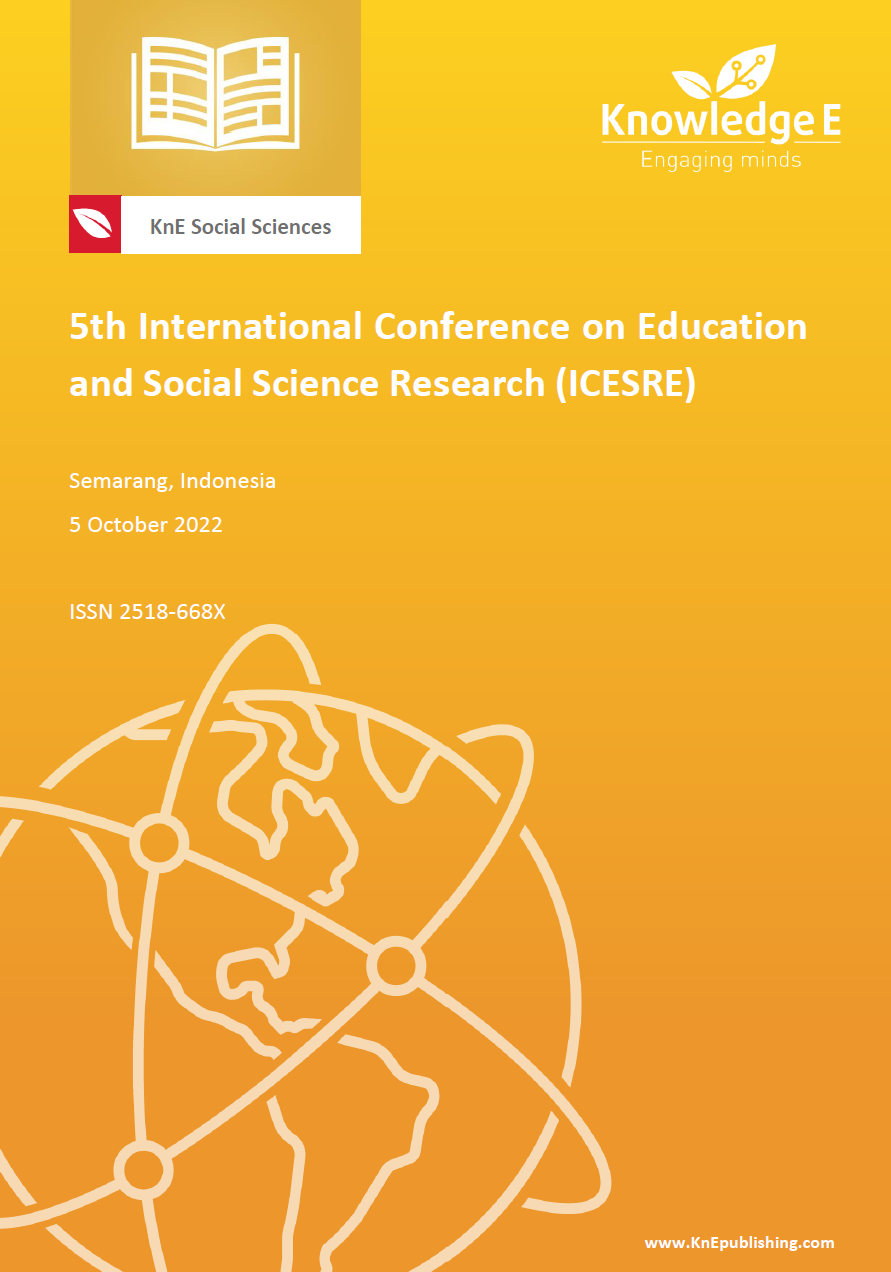Formulation a Strategy to Increase the Competitiveness of SMEs: a Case Study on the Industry of Batik Bojonegoro
DOI:
https://doi.org/10.18502/kss.v7i19.12477Abstract
Batik has quite a stable market trend, both in national and international markets. Almost every region in Indonesia has a specific and unique batik product. On one side, this condition enriches national batik variation so that consumers have many choices. On the other side, it triggers competitiveness, particularly in the national batik market. Therefore, SMEs working with batik must have competitiveness in encountering competitors. This research aimed to formulate a strategy that improves the competitive advantage of the Batik Bojonegoro Industry. The researcher employed a qualitative approach. Managers and employees of Batik Bojonegoro Industry were the research subjects. The data were collected through interviews, documentation, and observation which were then analyzed by Internal Factor Evaluation (IFE) Matrix, External factor Evaluation (EFE) Matrix, Internal-External (I-E) Matrix, and Quantitative Strategic Planning Matrix (QSPM). The research result showed that the Product Development Strategy is the best strategy to improve the competitiveness of the Batik Bojonegoro Industry. This strategy has the highest Sum Total Attractiveness Scores (STAS) value on the QSPM matrix by 5.81. Product Development Strategy is the most appropriate strategy for Batik Bojonegoro SMEs to confront the power of competition and strengthen the competitiveness of businesses.
Keywords: Business strategy, competitiveness, SME, Batik Bojonegoro.
References
[2] Rangkuti F. Analisis SWOT; Teknik membedah kasus bisnis. Jakarta: Gramedia Pustaka Utama; 2013.
[3] Pearce JA, Robinson RB. Manajemen strategis: Formulasi, implementasi dan pengendalian. Translated by Nia Permata Sari. Jakarta: Salemba Empat; 2013.
[4] Kavitha, Karthikeya, Devi. An investigation of competitive priorities and competitive advantage among small scale industries with reference to Coimbatore city. IOSR Journal of Business and Management (IOSR-JBM). 2013;7:39–44.
[5] David FR. Manajemen strategis. Translated by Dono Sunardi. Jakarta: Salemba Empat; 2009.
[6] Rahmana A. Peranan teknologi informasi dalam peningkatan daya saing usaha kecil menengah. Makalah dalam Seminar Nasional Aplikasi Teknologi Informasi. Yogyakarta: 2009.
[7] Lemhannas RI. Peningkatan daya saing industri indonesia guna menghadapi Asean– China Free Trade Agreement (ACFTA) dalam rangka memperkokoh ketahanan nasional. Jurnal Kajian Lemhannas RI Desember; 2012.
[8] Susilo YS. Strategi meningkatkan daya saing UMKM dalam menghadapi implementasi CAFTA dan MEA. Buletin Ekonomi. 2010;8:70–170.
[9] Li M. The customer value strategy in the competitiveness of companies. International Journal of Business and Management. 2009;4:136–141.
[10] Campos A, Parellada, Parra. Technology strategy and new technology based firms. Journal of Technology Management & Innovation. 2009;4:42–52.
[11] Yan S. Competitive strategy and business environment: The case of small enterprises in China. Asian Social Science. 2010;6:64–71.
[12] Chandamoyo P, Dumbu E. Competitive strategy and business environment influencing performance of small and medium enterprises in the manufacturing sector: The case study of manufacturing firms in Mucheke Light Industry. European Journal of Business and Management. 2012;4:28–36.
[13] He N. How to maintain sustainable competitive advantages; Case study on the evolution of organizational strategic management. International Journal of Business Administration. 2012;3:45–51.
[14] Lourens AS, Jonker JA. The strategic relevance of technology-related variables to the competitiveness of small- to medium-sized furniture manufacturers. South African Journal of Industrial Engineering. 2012;23:180–195.

